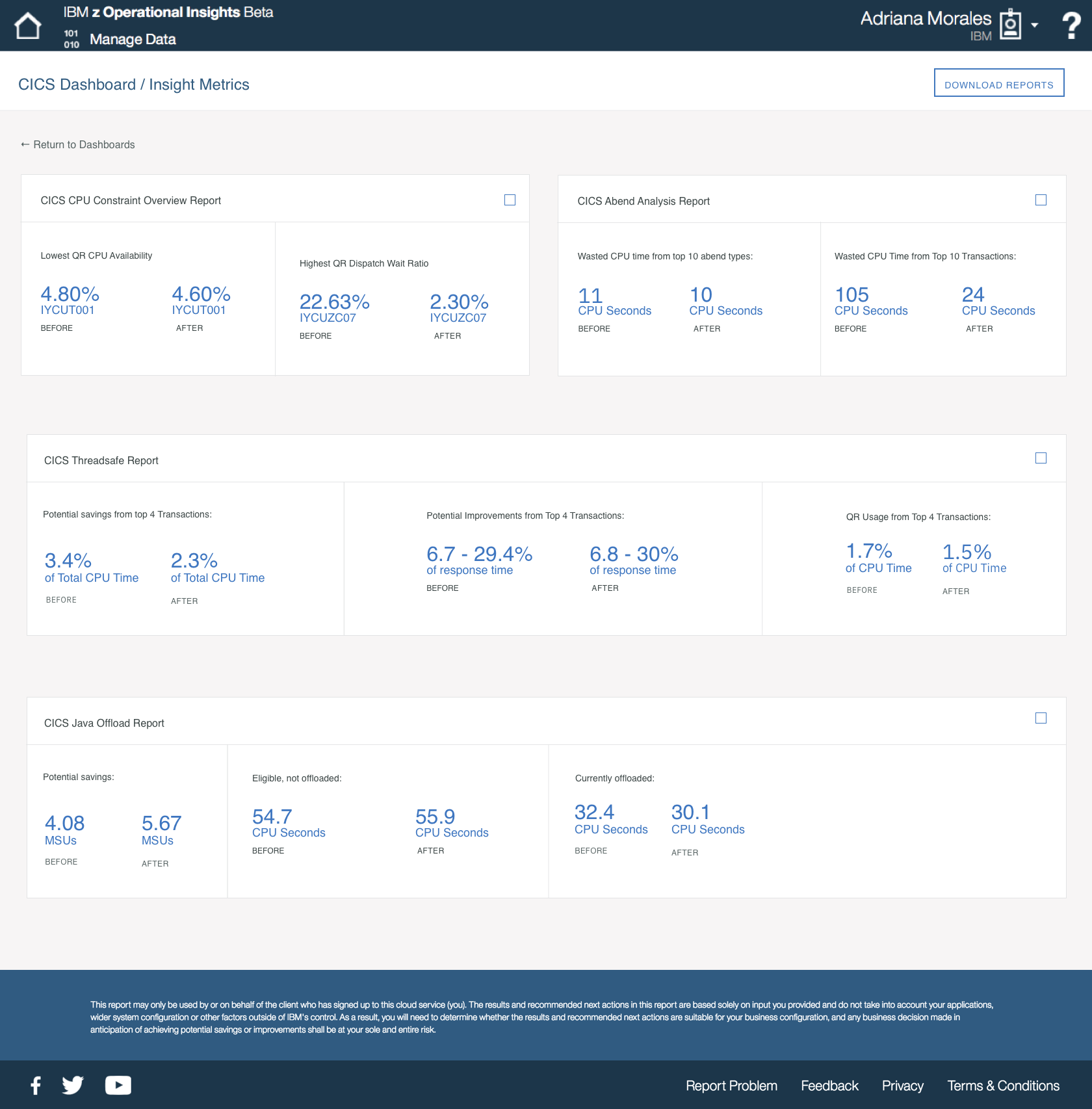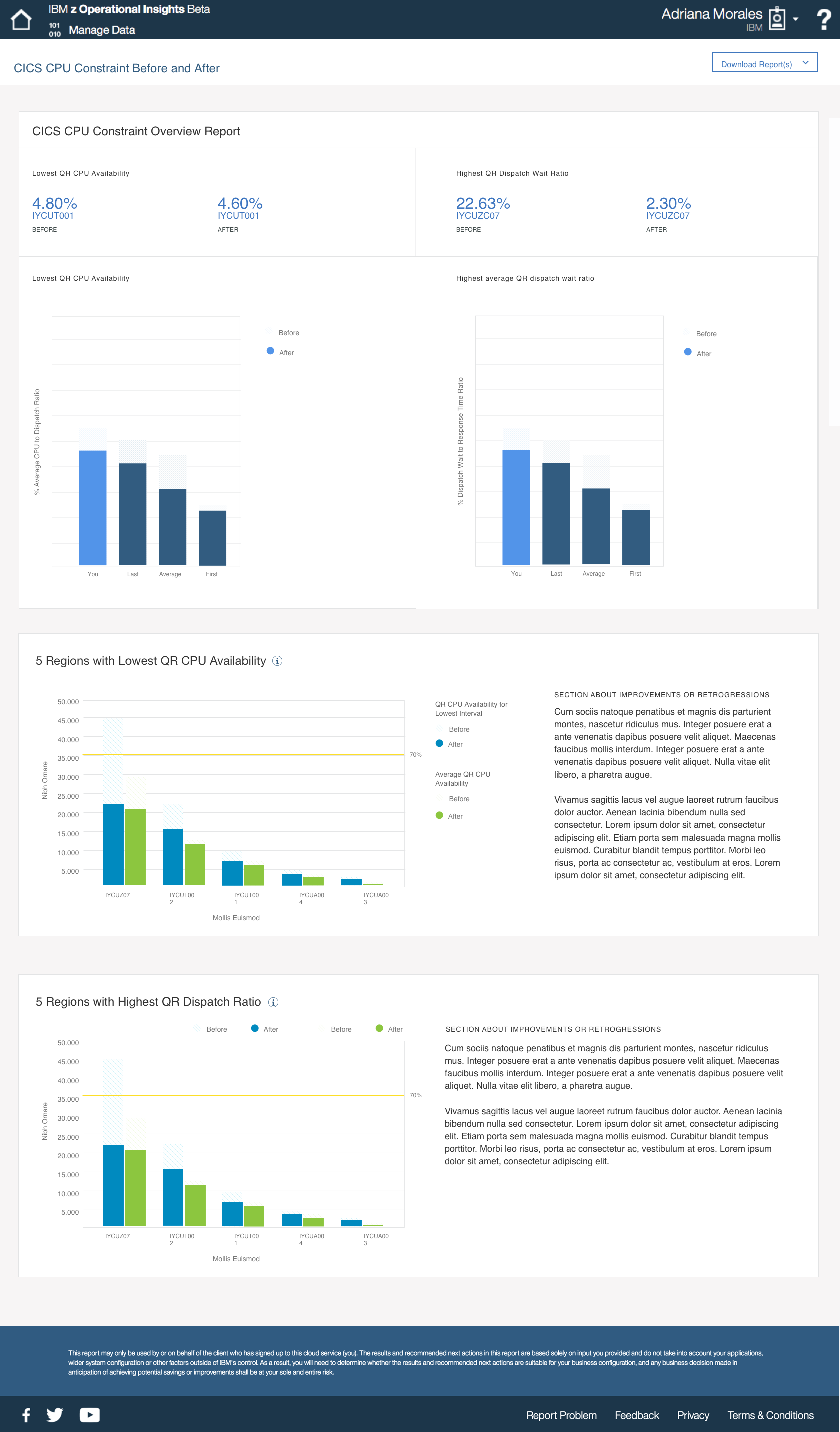Timeframe
2016-2017
Role
UX / visual designer
Skills
UX, interaction design, and visual
z Operational Insights: Fine-tuning the mainframe
In 2015, I joined IBM as a UX designer for z Systems mainframe IT service management sector. As a very large, 100-year-old tech company, IBM, was radically changing from the inside out.
The challenge and problem space
In the past ten years, large enterprises such as airlines and financial banks have experienced intense pressure to modernize their mainframes to adopt cloud service models and graphic interfaces. For decades many mainframe system programmers and admins used 3270 green screens to manage their environments. These tools were cumbersome to use and required deep domain knowledge of CLI commands and troubleshooting through runbooks. As well, many companies needed to overcome a widening age and skill gap.
IBM and its mainframe were caught between its legacy in engineering and the need for a more human-centric approach to how products were researched, developed, and built.
The solution
My product, z Operational Insights, was z Systems first Cloud SaaS offering designed to address the pressures the industry faced by turning log data into actionable, understandable reports for users of all skills.
Balancing multiple user needs
Throughout my design process, I needed to create a cohesive experience that meets 3 different types of users who had varying domain knowledge and job roles:
1 - System programmers
System programmers are essential in maintaining mainframe infrastructure. Their primary role is to install, monitor, and maintain the operating system. They are a companies first responders to mainframe issues.
2 - Subject matter experts (SMEs)
Mainframe Subject matter experts are highly skilled and knowledgeable on specific pieces of z mainframe. SMEs are critical team members system programmers consult on what actions to take to resolve system issues and improve performance.
3 - IT/business managers
IT/business managers oversee the infrastructure teams. They are interested in seeing how their businesses are saving costs over time and other trends.
The biggest challenge at zOI is designing and making sure the product is aligned with these varying users group.
Designing for multiple learning curves
Throughout user interviews, I repeatedly heard people expressing frustration on two pieces:
1. Combing through 3270 screes to understand and pinpoint where problems occurred
2. Having to consult a runbook to determine which actions to take.
The insight reports needed to address these concerns. I wanted to strike a good balance between data visualizations showing problem areas, the text clearly explaining in layman terms what was happening, and providing clear takeaways to improve performance. So, I pitched the idea of using a “narrative style” report to improve the clarity, quality, and usability of the reports. I lead the visual design direction and overall experience of zOI.
Using simple, clear, and concise language
Throughout my design process, I took into consideration the different domain knowledge and learning curves of our users. Working with a content designer, we kept explanations short but informative and paired them with data visualizations to highlight where problem areas occurred.
Each inside report included a scannable list of recommended actions a user could take along with additional resources to consult.
Building a component a library
At the time z Operational Insights was developed, there was no centralized design system and many products in z Systems were using outdated frameworks. So, I designed and built a small library of reusable components with my dev team throughout the design and development process.





Establishing trust through branding
Along with the narrative style, I spearheaded the zOI's branding direction to be based on the geometric panels of a z13 mainframe. This work became a grassroots project I lead with a few other visual designs in IBM Z. More can be found in my IBM Z - Reimagining the mainframe case study.
The results
As IBM Z’s first SaaS offering, z Operational Insights, showed the opportunity and growth for cloud-based tooling, while addressing the mainframe knowledge and skill gap. The 11 unique insight reports analyzed key areas of a companies system. Within 15 minutes, operators and IT admins could pinpoint problem areas and take action through the recommended steps.
As a UX designer within IBM Z, I helped set the foundation for a component library while bringing enterprise design thinking to a legacy area of IBM.
11
Unique insight reports
20
Coded components
200
Beta and EAP users
15
minute time-to-value









